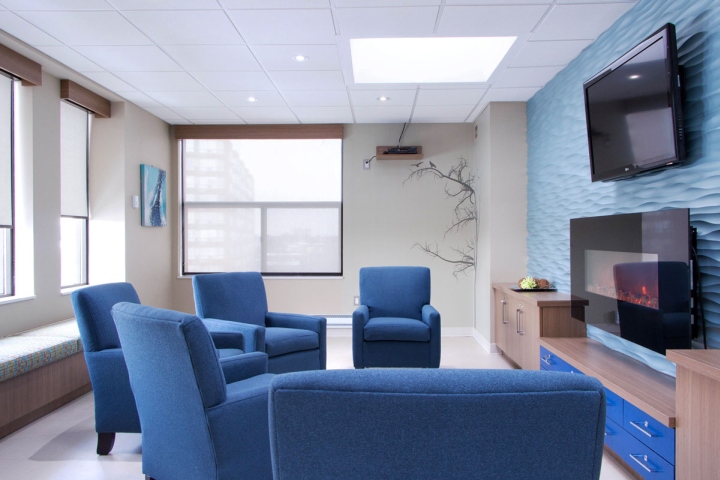

They have to leave the home routine for the hospital one. Young cancer patients become accustomed to a limiting life, many restrictions, and procedures often painful. The process of seeking cure requires an adaptation to the routine reality. The conclusion is that Ergonomics of the built environment contribute significantly to the day-to-day process of a hospital space. To obtain the necessary references to the understanding of the theme, this article was based on a bibliographical research of consecrated authors that deal with the subject in question. This paper brings a study on the conceptual aspect of ergonomics and its benefits to the built environment. It seeks to understand how the integral needs of the users may become the focus – to the detriment of the disease-centered approach –, with more humanized spaces adapted to their expectations and needs. This paper discusses conceptually the use of cognitive ergonomics as a tool of inter and transdisciplinary ideas in the design process of the built environment of children’s healthcare spaces. The goal is their well-being, adequacy of physical elements, and good usability of the space.

This shows that both Ergonomics of the built environment and Ergonomics in the design process play a relevant part in the betterment of children’s healthcare spaces.Īs such, the goal here is to understand the relationship between users and the environment, assessing whether it meets the needs of children and their caregivers. As a result, there is improvement in the interaction they have with patients. A healthy environment creates healthy employees, the more frequent occupants. This contributes to the construction of new situations that may come to transform paradigms of healthcare spaces.Īrchitecture is, then, a facilitating tool for the change of the work process. They can stimulate a positive perception of the environment in which people inhabit.

Ambiance then becomes an important factor in breaking preconceived ideas of what healthcare spaces should look like.Įlements of the built environment may act as modifying and qualifying factors of the space. It encompasses the dimensions of relationships, the physical structure, and the way these two interact with the activities that occur therein. The concept of hospital environment based on the precepts of cognitive ergonomics expands the understanding of hospital ecology. The discussion of humanization of architecture seeks to translate in a practical way the idea of paradigmatic revisions of healthcare practices happening today. This happens despite a child’s age or cognitive capacity to understand the reality that surrounds them.Īlthough the built environment cannot eliminate patients’ suffering, it can contribute to improve their well-being. It breaks the line of continuity in their natural development with an unexpected sense of danger. KeywordsĬhildhood diseases make patients’ lives go through a rapid and intense transformation. As such, the goal here is to understand the relationship between users and the environment, assessing whether it meets the needs of children and their caregivers. It shows that both Ergonomics of the built environment and Ergonomics in the design process play a relevant part in the betterment of healthcare spaces. This contributes to the construction of new situations that may come to transform paradigms of healthcare spaces. Ambiance then becomes an important factor in breaking preconceived ideas of what healthcare spaces should look like. It encompasses the dimensions of relationships, the physical structure, and the way these two interact with the activities that occur there.


 0 kommentar(er)
0 kommentar(er)
